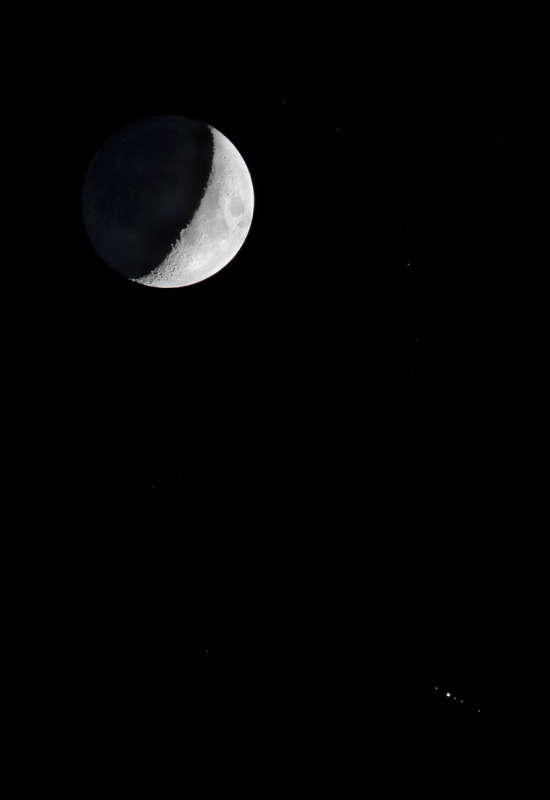Explanation: After sunset on October 3, some of the Solar System's largest moons stood low along the western horizon with the largest planet. Just after nightfall, a pairing of the Moon approaching first quarter phase and Jupiter was captured in this telephoto field of view. A blend of short and long exposures, it reveals the familiar face of our fair planet's own large natural satellite in stark sunlight and faint earthshine. At lower right are the ruling gas giant and its four Galilean moons. Left to right, the tiny pinpricks of light are Ganymede, [Jupiter], Io, Europa, and Callisto. Our own natural satellite appears to loom large because it's close, but Ganymede, Io, and Callisto are actually larger than Earth's Moon. Water world Europa is only slightly smaller. Of the Solar System's six largest planetary satellites, only Saturn's moon Titan, is missing from this scene. But be sure to check for large moons in your sky tonight.
Submitted to APOD:
The
Moon and Jupiter with its Satellites
1999 2000 2001 2002 2003 2004 2005 2006 2007 2008 2009 2010 2011 2012 2013 2014 2015 2016 2017 2018 2019 2020 2021 2022 2023 2024 2025 |
Yanvar' Fevral' Mart Aprel' Mai Iyun' Iyul' Avgust Sentyabr' Oktyabr' Noyabr' Dekabr' |
NASA Web Site Statements, Warnings, and Disclaimers
NASA Official: Jay Norris. Specific rights apply.
A service of: LHEA at NASA / GSFC
& Michigan Tech. U.
|
Publikacii s klyuchevymi slovami:
Moon - Luna - Yupiter - galileevy sputniki
Publikacii so slovami: Moon - Luna - Yupiter - galileevy sputniki | |
Sm. takzhe:
Vse publikacii na tu zhe temu >> | |
